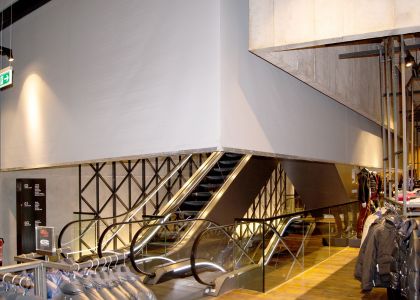
If a fire breaks out, smoke containment systems prevent the movement of smoke and heat from one area to another. Usually they are designed for use as part of an overall smoke control system.
If the smoke is allowed to spread, damage can occur to parts of the building remote from the fire. If the smoke spreads too far and cools it will drop and then there is the risk of the building becoming smoke logged. On the other hand, if the smoke is contained, then the smoke layer remains relatively hot and buoyant, giving rise to more efficient ventilation.
In larger buildings smoke containment systems can create smoke zones or reservoirs for this purpose.
Smoke containment systems take the form either of physical barriers such as smoke curtains, or as pressure differential systems, also known as pressurisation systems.
Physical barriers in the form of curtains can be either fixed or movable. Movable systems have the advantage that since they are held retracted at high level, they are virtually invisible until needed. They roll down when required.
Moveable curtains will normally be up at high level, well above head height, and in most cases smoke curtains don’t descend down to ground level.
Where it is necessary to contain the fire as well as smoke, a fire curtain may be used for containment instead of smoke curtains.
A fire curtain is used to provide fire separation between two spaces. It may well provide smoke control at the same time, but that is not its primary purpose, which is to prevent the spread of fire, and typically it may be used to protect a lift door or an escape route through an open plan dwelling.
We can assist with the design of smoke containment schemes. We offer a free technical design service on all projects undertaken. Please contact us for further information.